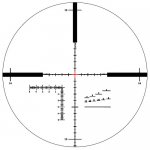Hello All,
This is my first post on SH, I've lurked for a while as most do and finally joined a few months ago. Post count will always be an issue for me as this site is so inundated with information and feedback as well as varying opinions and viewpoints that with some exploring I can piece together answers to whatever questions I may have. Post count not being up to par, the best way for me to contribute thus far has been to support the vendors and manufacturers who support this site and the precision rifle shooting sport.
I got very experienced competing in the NRA Long-Range and Palma disciplines before severely aggravating a wrist injury in my sling-side arm that a surgery failed to fix. The ensuing 5 competition-free years have been spent focusing on work and renovating the house and with that latter venture nearly accomplished, my wife is encouraging me to find another shooting venue to pursue so I don't go stir crazy. Reading up on the Precision Rifle Series matches last year captured my interest and got the juices flowing again so I'm headed in that direction this time.
My experiences with long-range known-distance static shooting leave me with a very humble and appreciable respect for the dynamic shooting problems presented at the PRS type matches. Barrels, actions, stocks, rings and slings aside, the two variables I've been researching have been cartridge and scope selection. Based on the feedback from this forum and some other sources, the cartridges were easy enough to choose as well as the scope, but the one question I have for this post is based on shooting strategies as applicable to the scope reticle design.
My question is this: How do shooters approach the changing dope for each shot? For each stage? Let me use two Vortex reticle styles as a general example; their EBR-1C and EBR-2C reticles. One is a hashed crosshair, the other has the inclusion of a "tree" reticle to accommodate more extreme hold-offs and both have very finely graduated marks for target measurement. My first impression was that the tree reticle in the EBR-2C style would be ideal in terms of versatility as it offers what the EBR-1C does and then additional reference marks. That seemed intuitive to me, however, from perusing the SH reticle threads, it seems that reticles of the EBR-1C style are very popular, especially in the S&B scopes.
Without getting into a scope-brand discussion, I'm interested in how shooters approach shooting scenarios in PRS type matches, how much do you dial in the dope and how much do you hold off? Does the tree reticle distract from the field of view? I wish I had the appropriate experience to make my own personal decision, but I don't and these tier-1 level scopes are a significant investment, so I'd appreciate any input anyone is willing to give up prior to making a purchase.
Thanks,
Dan Gleeson
This is my first post on SH, I've lurked for a while as most do and finally joined a few months ago. Post count will always be an issue for me as this site is so inundated with information and feedback as well as varying opinions and viewpoints that with some exploring I can piece together answers to whatever questions I may have. Post count not being up to par, the best way for me to contribute thus far has been to support the vendors and manufacturers who support this site and the precision rifle shooting sport.
I got very experienced competing in the NRA Long-Range and Palma disciplines before severely aggravating a wrist injury in my sling-side arm that a surgery failed to fix. The ensuing 5 competition-free years have been spent focusing on work and renovating the house and with that latter venture nearly accomplished, my wife is encouraging me to find another shooting venue to pursue so I don't go stir crazy. Reading up on the Precision Rifle Series matches last year captured my interest and got the juices flowing again so I'm headed in that direction this time.
My experiences with long-range known-distance static shooting leave me with a very humble and appreciable respect for the dynamic shooting problems presented at the PRS type matches. Barrels, actions, stocks, rings and slings aside, the two variables I've been researching have been cartridge and scope selection. Based on the feedback from this forum and some other sources, the cartridges were easy enough to choose as well as the scope, but the one question I have for this post is based on shooting strategies as applicable to the scope reticle design.
My question is this: How do shooters approach the changing dope for each shot? For each stage? Let me use two Vortex reticle styles as a general example; their EBR-1C and EBR-2C reticles. One is a hashed crosshair, the other has the inclusion of a "tree" reticle to accommodate more extreme hold-offs and both have very finely graduated marks for target measurement. My first impression was that the tree reticle in the EBR-2C style would be ideal in terms of versatility as it offers what the EBR-1C does and then additional reference marks. That seemed intuitive to me, however, from perusing the SH reticle threads, it seems that reticles of the EBR-1C style are very popular, especially in the S&B scopes.
Without getting into a scope-brand discussion, I'm interested in how shooters approach shooting scenarios in PRS type matches, how much do you dial in the dope and how much do you hold off? Does the tree reticle distract from the field of view? I wish I had the appropriate experience to make my own personal decision, but I don't and these tier-1 level scopes are a significant investment, so I'd appreciate any input anyone is willing to give up prior to making a purchase.
Thanks,
Dan Gleeson




